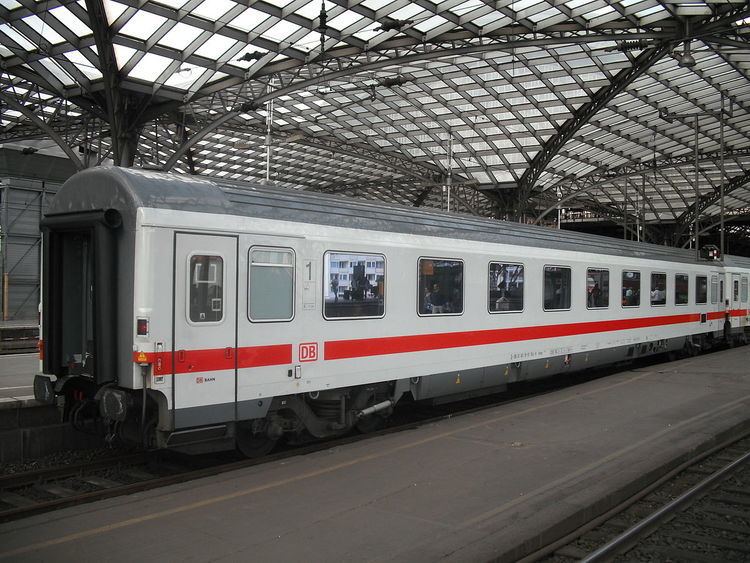 | ||
Railway coaches are classified under an international system developed by the UIC. This UIC classification of railway coaches replaced earlier national classification schemes in many countries, such as Germany. The coach class is expressed as a combination of letters. It is sometimes followed, for example in the Deutsche Bahn AG, by a three-figure class number. In a broader sense the vehicle number displayed on the coach is also part of its classification, because it encodes other technical details such as the top speed or the type of heating system used.
Contents
- Main letters
- Secondary letters Deutsche Bahn AG
- Secondary letters Austrian Federal Railways
- Vehicle number
- References
For example the full designation of a passenger coach, including its coach number, looks like this:
73 80 29-94 708-7 Bpmbz 293.6
This article explains how this classification code on the sole bar of each coach may be decoded.
Main letters
The classification of a coach begins with one or more class letters, in our example above, a capital B. It describes the general class of coach:
Secondary letters (Deutsche Bahn AG)
The following lower-case letters follow the main letters and describe the technical equipment and fittings of the coach. How the letters are used, is at least partly up to the individual railway company. This overview is based on the system used by the Deutsche Bahn AG:
Secondary letters (Austrian Federal Railways)
The Austrian Railways use different secondary letters for twin- and four-axled coaches. The following letters have been in force since 1981. The letters d for double-decker coach, l for push-pull coaches and s for driving cars are written after a dash (e.g.: Bmpz-ds).
Vehicle number
See: Coach number
Coach class (figure 5)
0 = Private coach 1 = A 2 = B 3 = AB 4 = Ac, Ac Bc 5 = Bc 7 = Railway company sleeper, all classes
